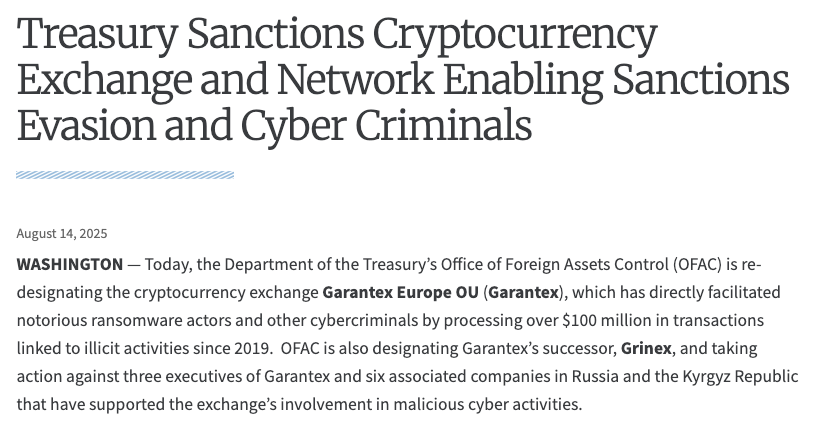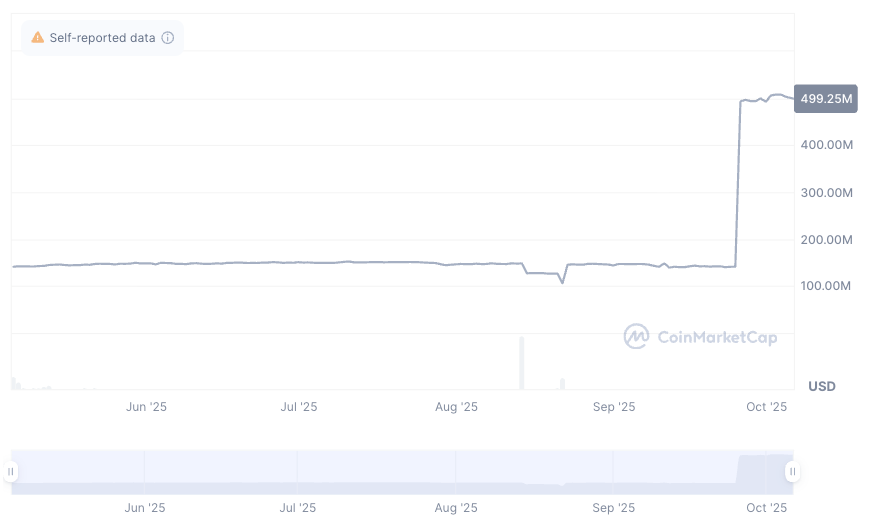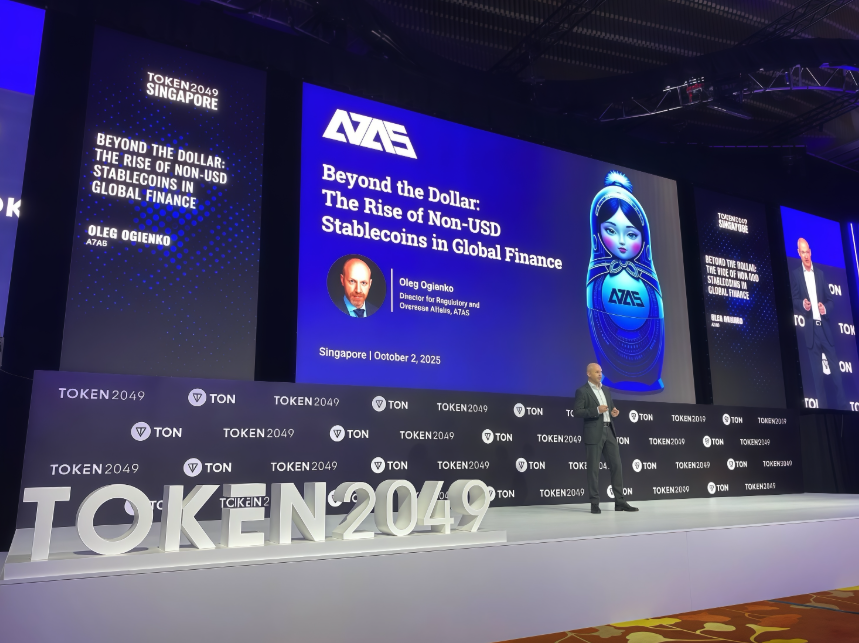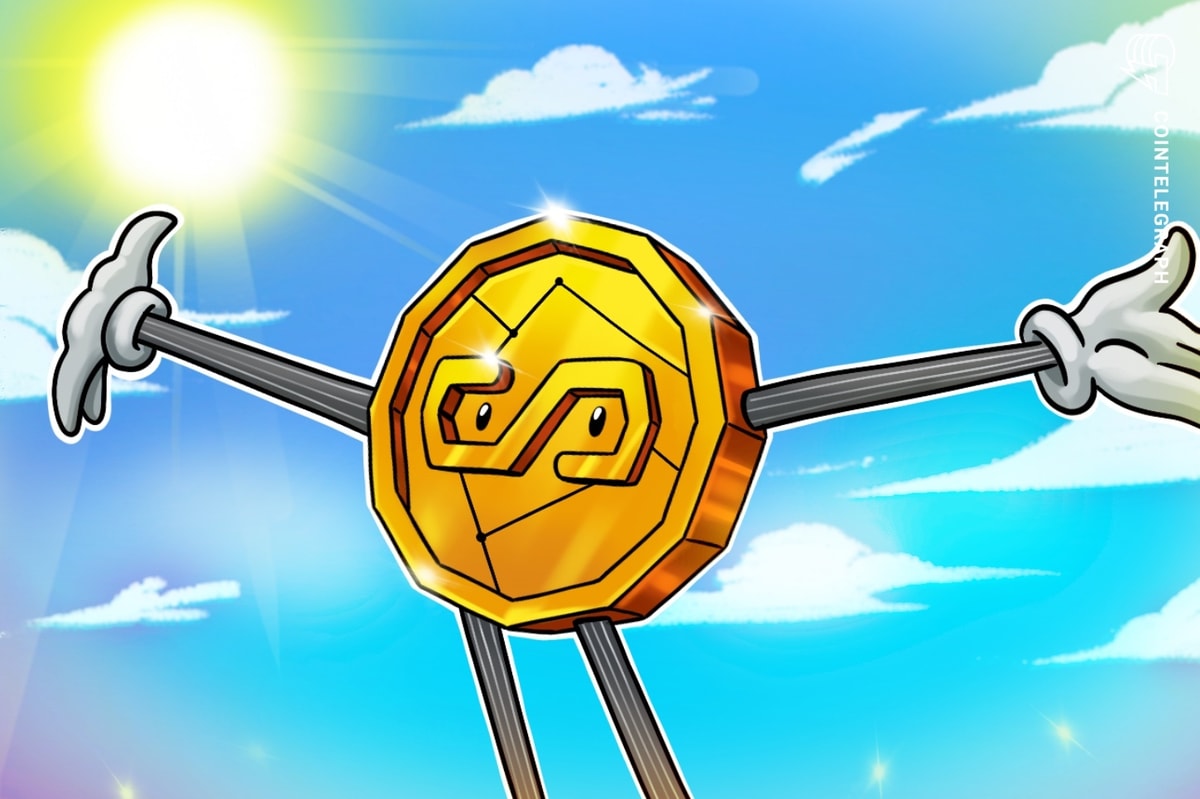A7A5 Becomes Top Non-Dollar Stablecoin Amid Sanctions
A7A5, a Russian ruble-backed stablecoin issued in Kyrgyzstan, has become the world’s largest non-US dollar stablecoin despite facing multiple sanctions.
A7A5’s market capitalization stood at nearly $500 million on Monday, about 43% of the total $1.2 billion market cap of non-US dollar stablecoins, according to data from CoinMarketCap and DefiLlama.
“We have already proven that a national digital currency can be not only an alternative to the dollar but also a driver of global change,” A7A5 wrote on its Telegram channel on Saturday.
The statement came as the project drew attention at Token2049, a major crypto industry event in Singapore, where its presence raised questions about sanctions compliance and the project’s growing international exposure.
A7A5: A brief timeline of sanctions
The A7A5 stablecoin was launched in February as a “token backed by a diversified portfolio of fiat deposits held in reliable banks within Kyrgyzstan’s network.”
Pegged 1:1 to Russia’s national fiat currency, the ruble, A7A5 promised to distribute a daily passive income that is equal to half of the interest on deposits. The token was initially issued on two blockchain networks, Ethereum and Tron.
Soon after its debut, blockchain analysts linked A7A5 to Grinex, a crypto exchange widely seen as the successor to the sanctioned Russian Garantex exchange.
In mid-August, the US Treasury announced sanctions against Garantex and related entities, highlighting Moldovan oligarch Ilan Shor as the owner of A7A5’s issuer, the sanctioned Russian bank Promsvyazbank PSB.

The United Kingdom also promptly imposed a set of sanctions on several banks in Kyrgyzstan, reporting that Russia used A7A5 to bypass Western financial restrictions.
A7A5 added $350 million in one day
Despite broad sanctions, A7A5’s market value held steady between $120 million and $140 million.
On Sept. 25, A7A5’s market cap surged by $350 million — a 250% jump in just one day — making it the largest non-US dollar stablecoin by value, ahead of Circle’s euro-pegged EURC (EURC), which stood at $252 million at the time of writing.

The sharp rise in A7A5’s market cap came just days before the project’s appearance at Token2049, where it hosted a booth and executive Oleg Ogienko took the stage.
A7A5’s presence at the conference sparked controversy within the crypto community, with many calling for compliance and “closing regulatory loopholes” at industry events.

Some investigators have linked A7A5’s growth to ties with China. “Trade with China has emerged as the dominant focus of A7’s activities to date,” nonprofit organization Centre for Information Resilience (CIR) said in a report on Monday.
Related: All currencies will be stablecoins by 2030: Tether co-founder
CIR reported that “78% of A7 transactions went through Chinese jurisdictions according to figures shared by the company in August 2025,” adding that the stablecoin has also been heavily expanding into Africa, with offices in Nigeria and Zimbabwe.
“Further research will be needed to comprehensively understand how funding flows through the organization’s network, the potential role of financial institutions in enabling its operations and any linkages to Russian political interference schemes,” CIR added.
Cointelegraph approached A7A5 for comment regarding the stablecoin’s growth, but did not receive a response by publication.
Magazine: Hong Kong isn’t the loophole Chinese crypto firms think it is


